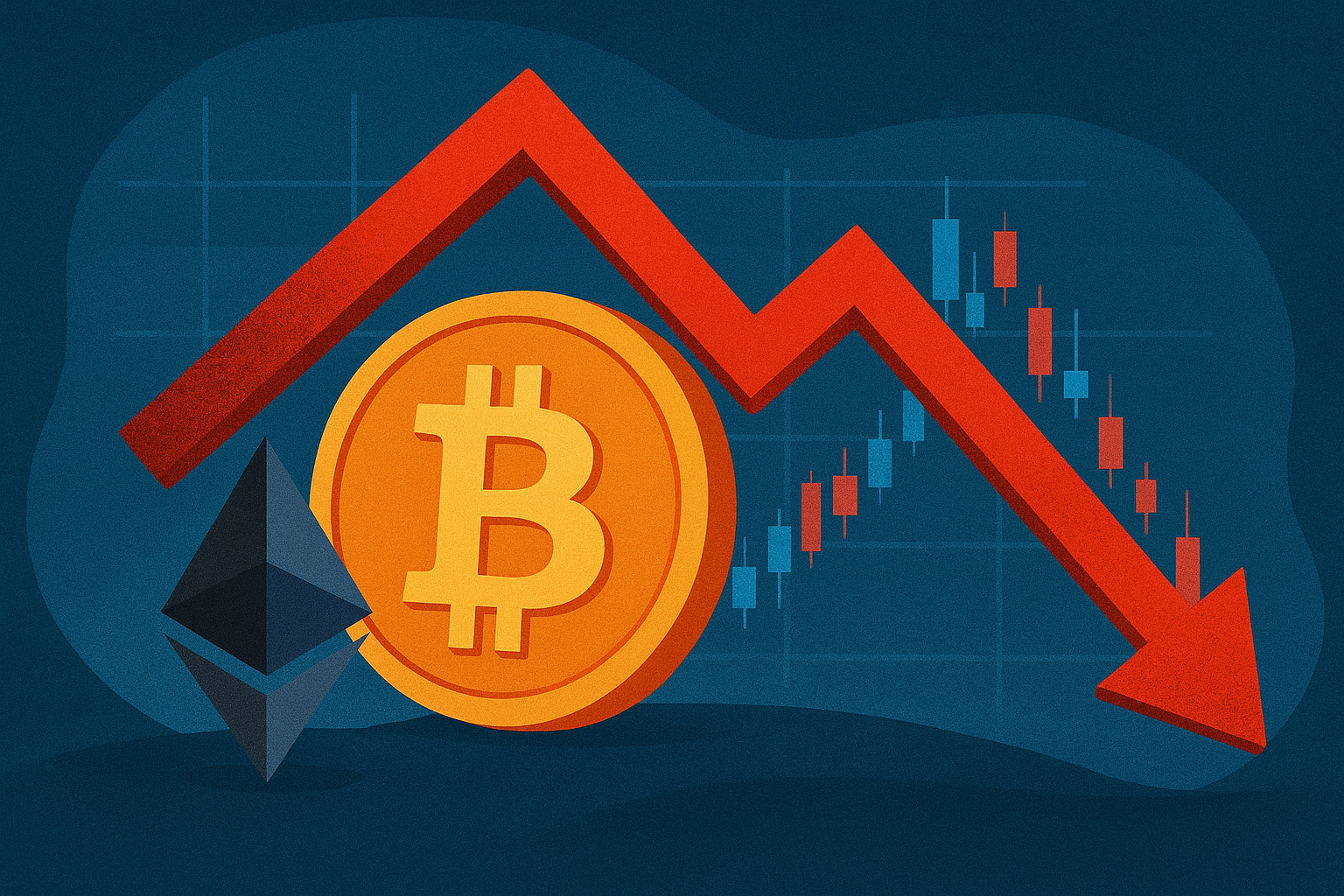Global crypto markets are once again on edge as Bitcoin (BTC) and Ethereum (ETH) tumble below critical support levels, reigniting concerns about market liquidity and the durability of the year’s digital asset rally. The selloff—mirroring broader weakness in risk assets—has dragged total crypto market capitalization below $3.8 trillion, according to The Economic Times, as traders brace for a period of elevated volatility and regulatory uncertainty.
A Sudden Turn in Sentiment
Bitcoin’s recent fall below $90,000 and Ethereum’s dip under $4,500 mark the steepest two-day decline since June, wiping out nearly $200 billion in overall crypto market value. Analysts point to a combination of factors behind the move: declining liquidity on major exchanges, heavy liquidations in leveraged derivatives, and cautious institutional flows amid rising global interest rate expectations.
According to data compiled by Reuters, more than $2.3 billion in leveraged long positions were liquidated within 48 hours across major exchanges—a stark reminder that despite institutional adoption, crypto markets remain highly reflexive and vulnerable to liquidity squeezes. Traders also cited a notable drop in stablecoin inflows—a key measure of on-chain liquidity—signaling that sidelined capital is staying out for now.
Regulatory Pressure Adds to the Strain
The selloff coincided with a warning from the G20 Financial Stability Board (FSB), which highlighted “significant gaps” in global crypto regulation. The FSB’s report emphasized the lack of a cohesive framework for cross-border supervision and risk management, calling for “urgent action to mitigate systemic vulnerabilities.”
The timing could not be worse for digital asset investors. With the U.S. Securities and Exchange Commission (SEC) still finalizing its approach to crypto exchange-traded funds (ETFs) and Europe pushing forward with its Markets in Crypto Assets (MiCA) regime, uncertainty is weighing heavily on investor sentiment. Analysts at JPMorgan noted in a client memo that “regulatory opacity remains one of the biggest structural drags on crypto valuations,” particularly as institutional investors await clearer compliance pathways before committing new capital.
Why This Matters for Investors
For investors, this episode underscores a recurring theme: the crypto market’s dependence on liquidity and speculative momentum. While institutional inflows through Bitcoin ETFs provided strong support earlier in the year, recent outflows suggest that enthusiasm may be waning in the short term.
Market strategist Katie Stockton of Fairlead Strategies told Bloomberg that Bitcoin’s break below its 50-day moving average “represents a technical shift in momentum,” with potential downside targets around $82,000 if support doesn’t hold. Ethereum, meanwhile, could face further pressure if gas fees and network activity continue to decline, reducing demand for staking yields.
However, long-term investors are viewing this pullback differently. “Every liquidity reset in crypto historically paves the way for the next adoption phase,” said Philip Gradwell, chief economist at Chainalysis. “What we’re seeing is a market recalibrating expectations rather than collapsing.”
Macro Headwinds and the U.S.–China Factor
Beyond crypto-specific dynamics, macro trends are playing a decisive role. Rising bond yields, hawkish signals from central banks, and renewed U.S.–China trade tensions are curbing risk appetite across asset classes. With capital costs rising, speculative segments like crypto are among the first to feel the squeeze.
China’s recent tightening of capital controls on offshore crypto exchanges has further added to the liquidity crunch. Meanwhile, U.S. officials have hinted at new oversight measures on stablecoins, citing systemic risks from concentrated issuers such as Tether (USDT) and Circle (USDC). The result is a market navigating both financial and geopolitical stress simultaneously—a potent mix that often breeds volatility.
Future Trends to Watch
- Derivatives Flows: Watch for stabilization in perpetual futures funding rates, which often precede short-term reversals.
- ETF Inflows: Spot Bitcoin ETF activity remains a barometer for institutional sentiment. Sustained outflows could signal more downside risk.
- Stablecoin Supply: Changes in the aggregate supply of USDT and USDC provide key liquidity signals for crypto exchanges.
- Regulatory Announcements: Any coordinated move by G20 members or the U.S. Treasury to implement uniform crypto rules could reshape market structure overnight.
- Macro Shifts: Investors should monitor real rates and dollar strength—both have historically influenced crypto performance.
Key Investment Insight
Short-term traders may find opportunity in elevated volatility via derivatives and options strategies, but risk management remains critical. Long-term investors should focus on projects with solid fundamentals—layer-2 scalability solutions, decentralized finance (DeFi) platforms with sustainable yields, and AI-integrated blockchain infrastructure stand out as potential growth areas once regulatory clarity improves.
Diversification across assets and time horizons is paramount. As Morgan Stanley noted in a recent digital-asset outlook, “the next wave of crypto adoption will likely favor infrastructure plays rather than speculative tokens.”
Stay Ahead with MoneyNews.Today
Volatility is often the price of innovation, and the digital asset market is no exception. As crypto enters another pivotal phase shaped by regulation, technology, and macro forces, informed investors can still uncover substantial opportunities—if they know where to look.
Stay tuned with MoneyNews.Today for daily insights, data-driven analysis, and expert commentary on the global markets shaping tomorrow’s investments.





